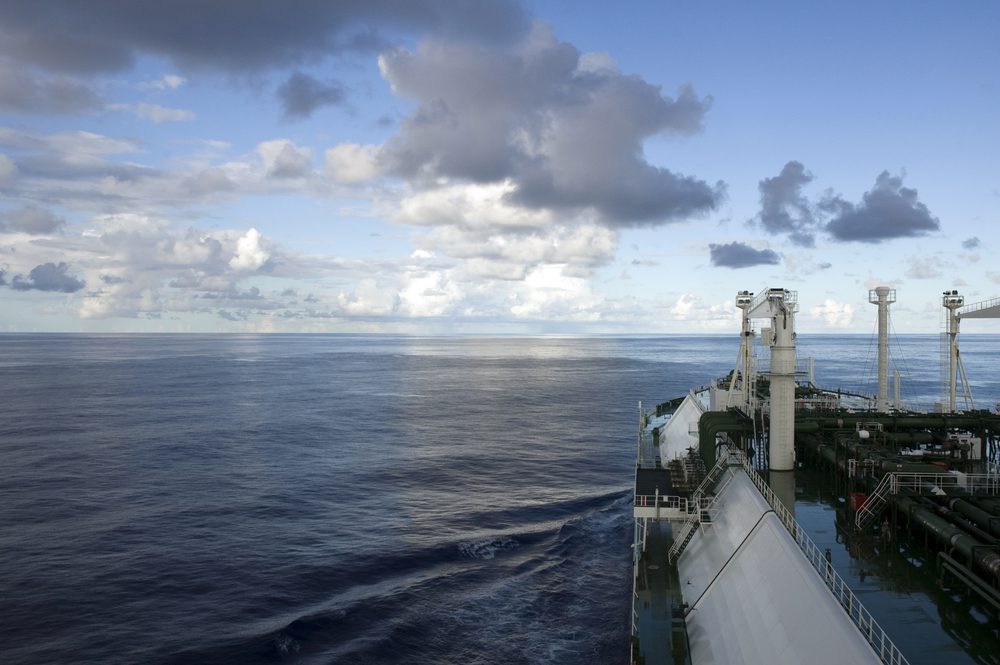Iranian Ship Linked to Houthi Attacks Heads Home Amid Tensions
(Bloomberg) — An Iranian ship that’s been linked to Houthi attacks in the Red Sea is returning home, removing a prominent asset in the area as the Islamic Republic braces...


By Bloomberg News
(Bloomberg) — U.S. liquefied natural gas producers face an unlikely challenge as they prepare to enter global markets: China has more than it needs.
The Asian nation will accept only 77 percent of contracted cargoes in 2015 as the slowest economic growth since 1990 cuts demand, according to industry consultant IHS Inc. The rest of the supply will be put up for sale amid a worldwide glut that Goldman Sachs Group Inc. says is likely to force U.S. export projects to operate at half capacity.
The U.S. and China are seeking to sell cargoes just as new output equivalent to more than a third of global demand is set to flood the market over the next three years. While producers face more competition, the supply surge is a bonanza for the world’s biggest buyers, including Japan, who are benefiting from the lowest prices since at least 2010.
“Chinese buyers have started trying to divert cargoes away from their home market,” James Taverner, an IHS analyst in Tokyo, said by e-mail. “To deal with existing and looming oversupply, the companies are attempting to sell volumes to other markets and have been negotiating with suppliers to delay ramp-ups of contracts.”
The North American shale boom triggered producers to prepare for LNG exports five years ago, when benchmark U.S. natural gas was as much as double today’s price. Elsewhere, companies including Chevron Corp. and BG Group Plc sank billions of dollars into new supply from Australia to Africa, counting on Asian demand.
Producers will increase annual supply by about 90 million tons over the next three years, according to Sanford C. Bernstein & Co., equivalent to about 38 percent of demand in 2014. There is 67 million metric tons of liquefaction capacity under construction in the U.S., Goldman Sachs said in a Nov. 5 note.
Asian demand isn’t guaranteed and prices for cargoes delivered to the region have plunged more than 60 percent from a record in 2014. LNG shipped to buyers such as Japan is now at $7.55 per million British thermal units, according to New York- based Energy Intelligence Group. That’s similar to what Asian buyers would pay for supplies from the U.S. including the cost of shipping. U.S. gas for December delivery traded at $2.333 at 8:38 a.m. on the New York Mercantile Exchange.
China produces its own LNG for domestic use, especially when a producing gas field has no access to a pipeline, according to Taverner at IHS. In such cases, small amounts of the liquefied fuel is transported to customers via trucks and none of it is exported. That accounts for about 5 percent of the nation’s gas market while about 15 percent of demand was met through LNG imports in 2014, he said.
China’s LNG purchases plunged 51 percent to 1.29 million tons in September from a record in January 2014, according to the country’s Customs General Administration. Natural gas pipeline imports from Turkmenistan fell by 30 percent from a February peak. The nation’s economic planner said Wednesday that the government will cut natural gas prices for business and industrial users as it seeks to boost use of the fuel.
“If China’s gas demand growth remains this slow, the excess capacity will gradually be exported,” said Michal Meidan director of consultant China Matters, which focuses on the energy sector. “The impact for regional markets would be to add supplies and hasten the move toward more competitive regional gas prices.”
It’s not the first time LNG buyers have purchased more than they needed and sought to resell cargoes. As a slowing economy in Spain cut domestic demand, the European nation overtook Norway last year to become the region’s biggest LNG exporter even though it has never produced any of the fuel.
China National Offshore Oil Corp. issued a tender for two LNG cargoes loading in October and November from Australia that was widely seen as the first from a buyer in northeast Asia, price-reporting agency Platts said in September.
As the global glut weakens the negotiating power of producers and consumers seek better contract terms, U.S. shippers may have one advantage over rivals. Most of the North American supply will arrive free of destination restrictions, a demand of buyers looking for more flexibility.
Export Incentive
Cheniere Energy Inc. estimates the break-even price for its supplies from the Gulf Coast delivered to Asia would be $7.70 to $8.40 per million British thermal units, according to a presentation on its website. That’s lower than shipments from other regions including Northwest Australia, where the break- even price is as much as $16, according to the company.
“Although U.S. producers will have an incentive to export whenever LNG prices cover the variable cost of the feed gas, liquefaction and freight, we believe there is not sufficient demand for U.S. projects to operate at full capacity,” Goldman analysts including Christian Lelong wrote in a Nov. 5 report.
–With assistance from James Paton.
©2015 Bloomberg News
Join the gCaptain Club for curated content, insider opinions, and vibrant community discussions.


Join the 105,959 members that receive our newsletter.
Have a news tip? Let us know.
Access exclusive insights, engage in vibrant discussions, and gain perspectives from our CEO.
Sign Up




Maritime and offshore news trusted by our 105,959 members delivered daily straight to your inbox.



Essential news coupled with the finest maritime content sourced from across the globe.
Sign Up